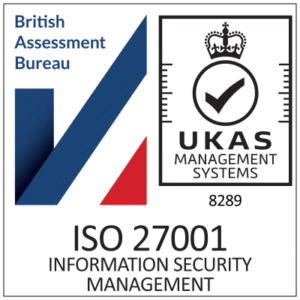
Safeguarding Kids High on the Agenda for Network Operators
Vodafone has become the latest UK operator to launch a new initiative focused on safeguarding children, which is particularly relevant as the latest cohort of 10- and 11-year-olds get their first smartphones ahead of starting secondary school in September. This follows the recent announcement by rival EE to offer a series of phone plans for under-18s, along with a range of support tools for families.
The growth of social media and messaging apps, the widespread easy access to online pornography by children, peer pressure and more have created a societal issue that urgently needs addressing. Some progress has been made, most notably with the UK’s Online Safety Act. This came into force in July 2025, with the primary goal of protecting children from harmful online content, including pornography, and ensuring they aren’t exposed to age-inappropriate material. However, despite its best intentions, the bill only addresses a small part of the problem and doesn’t stop the sharing and distribution of self-created content.
At its launch event, Vodafone unveiled research that found one in five 11- to 17-year-olds have felt pressured into sharing an explicit image of themselves. Furthermore, nearly two-thirds of children who have shared images or videos later discovered that the content had been forwarded without their consent, and 27% said they’d seen explicit photos of someone at their school through a friend’s device. These worrying statistics underline the enormous difficulties that children and caregivers face.
Vodafone also presented a hard-hitting video (see below), which will be used to raise awareness. As a parent myself, it’s uncomfortable viewing, but it reinforces the reality of how easily a seemingly harmless image can quickly ruin lives.
Like EE, Vodafone is supporting parents by launching a programme called Connect and Protect. This provides a set of tools developed alongside the NSPCC, helping increasingly daunted parents choose the right phone for their child. It also delivers a suite of parental controls on its Secure Net service to set age-appropriate filters, block unwanted websites and manage internet access for children.
However, the most important part of the announcement was Vodafone’s partnership with phone-maker HMD. The operator is now offering a device with software called HarmBlock+, developed by British company SafeToNet, which is deeply integrated into the phone’s firmware. It prevents explicit content from being shown on the screen, captured by the camera or stored on the device, with pictures, videos and livestreams all able to be blocked.
What’s so impressive about the solution is that it detects inappropriate content shared or captured in any app, including third-party platforms such as Snapchat and WhatsApp, despite the layers of end-to-end encryption these services offer.
The scanning of the phone screen, which takes place every seven seconds, raises concerns about battery life. However, the developers state that it can reduce battery life by only about 8%. This means that kids will still have sufficient battery life to last the day, and parents will have greater peace of mind.
The HMD Fuse phone provides parents with insights through features such as location sharing, customizable safe zones, contact whitelisting and the ability to control app access. Notably, HarmBlock+ doesn’t tell parents if their child has seen explicit content. This helps to uphold trust between parents and children on a sensitive issue that some kids don’t want to talk about.
As soon as explicit content appears, the phone’s screen is automatically blocked. But rather than closing or blocking the app, only the explicit element of the content is obscured. For example, when scrolling through WhatsApp messages, everything is displayed normally, but as soon as inappropriate content appears, it’s obscured. If the user continues to scroll, the rest of the messages reappear. Similarly, if explicit content is detected when a photo or video is being taken, the screen is blocked. It’s clever technology unlike anything I’ve seen.
This technology could just be the start. Support from other operators and device-makers is the next step, including devices like laptops and smartwatches. We hope that solutions like this will one day be seen as standard and widely available and treated like car seatbelts, a safety measure once questioned but now a normal part of driving.
Executives at SafeToNet hope that the launch of the HMD Fuse on Vodafone’s network will increase pressure on regulators to act and mandate similar solutions. This legislation would bypass arguments of preserving free speech, often spouted by large technology corporations. By focusing on child welfare and explicit content, the tool should receive less resistance from the loud minority of so-called free speech advocates.
If initiatives such as those launched by EE and Vodafone succeed in helping to raise the profile of the challenges facing young people today, it’ll be very significant.
However, it would be naive to think that one device on one network is enough to solve the problem. Parents and schools must continue to educate children about the dangers of sharing personal content and not rely on technology or legislation to address issues.
That said, I’d certainly like to see software with similar capabilities to HarmBlock+ being deployed more widely, most notably at an operating-system level. We have little doubt that companies such as Apple and Google could easily offer a similar solution on iOS and Android. It may be time to consider whether they have a moral duty to implement it.
 LinkedIn
LinkedIn
 Email
Email
 Facebook
Facebook
 X
X
